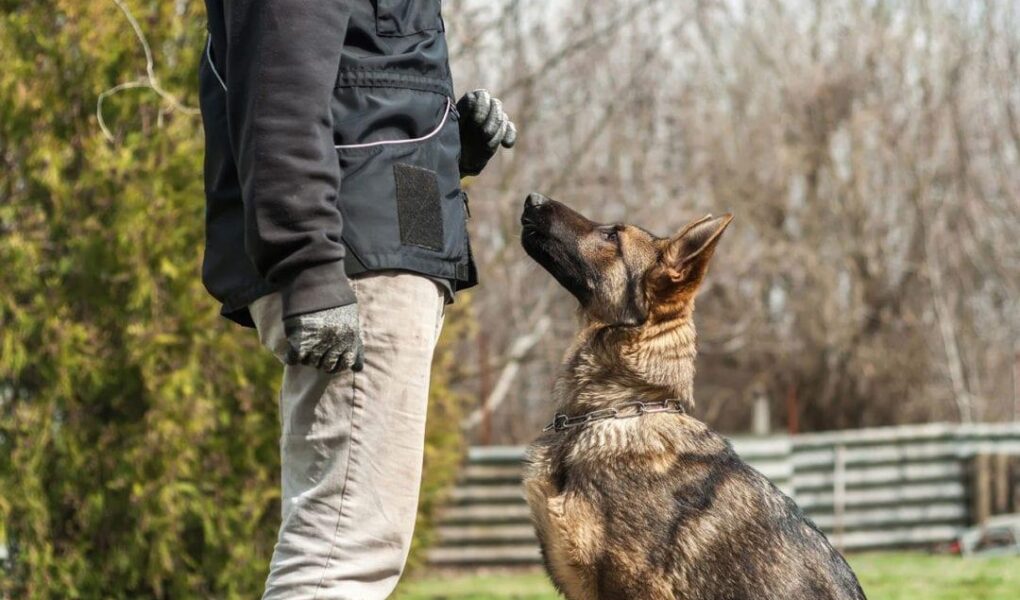Teaching your dog new tricks can be a delightful journey that deepens the bond between you and your furry friend. Whether you’re a new pet parent or a seasoned dog owner, tapping into your dog’s natural curiosity and enthusiasm for learning can transform mundane moments into engaging activities. In this article, we will explore easy and effective tricks that cater to dogs of all ages and skill levels. From the classic “sit” and “stay” to more entertaining antics, these simple techniques will not only enhance your dog’s obedience but also bring joy and laughter to your everyday interactions. Get ready to unleash your dog’s potential and make training a rewarding experience for both of you!
Table of Contents
- Effective Communication Techniques to Engage Your Dog
- Positive Reinforcement Strategies for Lasting Learning
- Fun and Interactive Games to Make Training Enjoyable
- Common Mistakes to Avoid for Successful Dog Training
- Q&A
- To Wrap It Up
Effective Communication Techniques to Engage Your Dog
To effectively communicate with your canine companion, it’s crucial to establish a bond built on trust and understanding. Dogs are astute observers of human behavior, so using consistent body language paired with vocal cues can enhance your relationship. Whether it’s a simple sit command or a fun trick, maintaining a posture that reflects confidence will resonate well with your dog. Consider the following techniques to strengthen this non-verbal communication:
- Maintain eye contact without staring; it shows your dog you are engaged.
- Use hand signals alongside verbal commands to reinforce learning.
- Be enthusiastic with your tone; dogs respond positively to upbeat voices.
- Reward promptly with treats or praise immediately after your dog performs the desired behavior.
Engagement is also about listening to your dog’s needs. Pay attention to their reactions and adjust your strategies accordingly. For instance, some dogs thrive on verbal praise, while others may prefer physical affection or tasty rewards. Here is a simple comparison of communication preferences:
| Dog Type | Preferred Communication Style |
|---|---|
| Active Breeds | Verbal commands with lots of energy |
| Shy Dogs | Gentle touches and calm tones |
| Puppies | Playful interactions and fun training games |
| Senior Dogs | Soothing voices and patience |
Positive Reinforcement Strategies for Lasting Learning
Utilizing positive reinforcement can transform your training sessions into enjoyable experiences for both you and your furry friend. Instead of focusing on corrections or reprimands, emphasize rewards that clearly communicate good behavior. Here are some effective strategies to consider:
- Use Treats Wisely: Choose small, high-value treats that your dog adores. These should be easily consumable to maintain training momentum.
- Verbal Praise: Accompany treats with enthusiastic verbal affirmations like “Good boy!” or “Well done!” This reinforces your bond and provides emotional support.
- Playtime as Reward: Incorporate play with a favorite toy as a reward for good behavior. This not only motivates your dog but also keeps sessions lively.
To track progress and ensure consistent rewards, consider implementing a simple matrix for reinforcement. This can help you quickly assess which strategies are most effective, allowing you to adapt your approach for maximum impact.
| Behavior | Type of Reinforcement |
|---|---|
| Sit | Treat + Praise |
| Stay | Playtime |
| Come | Treat + Enthusiastic Praise |
Fun and Interactive Games to Make Training Enjoyable
Training your dog doesn’t have to be a monotonous task. Incorporating fun and interactive games can invigorate the learning process, making it enjoyable for both you and your furry friend. Consider implementing these engaging activities:
- Hide and Seek: Start by having your dog stay in one place while you hide in another. Call them to find you for an exciting scavenger hunt experience.
- Treasure Hunt: Hide treats around your home or yard, encouraging your dog to sniff them out. This game sharpens their scent tracking abilities.
- Obstacle Course: Set up a mini agility course using household items. Guide your dog through jumps, tunnels, and weave poles, rewarding them for completing the course.
Incorporating these games not only keeps your dog’s attention but also builds upon their basic training commands. Visual aids can enhance learning; consider creating a simple table to outline commands and corresponding games:
| Command | Game |
|---|---|
| Come | Hide and Seek |
| Follow | Treasure Hunt |
| Jump | Obstacle Course |
Common Mistakes to Avoid for Successful Dog Training
Training your dog can be a rewarding experience, but it’s important to avoid some common pitfalls that many owners encounter. One major mistake is inconsistency in commands and reward systems. If you’re inconsistent with cues such as “sit” or “stay,” your dog will become confused and may not respond as expected. This confusion can lead to frustration for both you and your pet. Make sure everyone in your household uses the same commands and rewards are given immediately after the desired behavior to reinforce learning.
Another frequent error is lack of patience. Dogs do not learn at the same pace as humans, and it’s essential to remember that patience is key. Rushing through training sessions or becoming irritated by mistakes can create a negative atmosphere, which hampers your dog’s learning process. Instead, try shorter, more frequent training sessions filled with positive reinforcement. This will help your dog associate learning with fun and will build a stronger bond between you and your furry friend.
Q&A
Q&A: Easy Tricks to Teach Your Dog
Q1: What are some basic tricks that I can start teaching my dog?
A1: Great question! Some easy and fun tricks to start with include “sit,” “stay,” and “shake hands.” These tricks are not only simple but also serve as foundational commands that help with your dog’s overall training. Begin in a quiet environment with minimal distractions to help your dog focus.
Q2: How do I effectively teach my dog a new trick?
A2: Teaching your dog a new trick involves patience, consistency, and positive reinforcement. Start by demonstrating the trick yourself. Use treats to encourage them, and reward them immediately when they perform the trick correctly. Repetition is key—practice a few short sessions each day rather than one long session to avoid overwhelming your pup.
Q3: What if my dog doesn’t seem to understand the trick?
A3: Every dog learns at their own pace. If your dog isn’t getting it, try breaking the trick down into smaller, manageable steps. Use a lure, like a treat, to guide them through the motions. Don’t forget to stay positive; if they struggle, take a break and try again later. Sometimes, a day off can do wonders for motivation!
Q4: How important are treats in the training process?
A4: Treats are an excellent motivator and can make training sessions more enjoyable for your dog. Choose treats that your dog loves and that are small enough to avoid overfeeding during training. As your dog masters the trick, you can slowly reduce the number of treats given, transitioning to verbal praise or affection instead.
Q5: Can I teach my dog tricks without using treats?
A5: Absolutely! While treats are effective, you can also use toys, praise, or playtime as rewards. Some dogs may respond better to different forms of reinforcement, so it’s all about finding out what your pup values most. Experiment with various rewards to see what makes their tail wag the most!
Q6: How long should I train my dog each day?
A6: Short training sessions are usually the most effective for dogs. Aim for 5-10 minute sessions one to three times a day. This keeps their attention sharp and makes learning more enjoyable. If they lose interest or start to get distracted, it’s a good sign to wrap up and try again later.
Q7: Is there a magic age to start teaching tricks?
A7: Dogs can learn tricks at any age! Puppies are often quick to catch on due to their natural curiosity, but older dogs can learn just as easily with a little patience. The key is to create a positive experience that encourages them to enjoy the process of learning.
Q8: Do you have any tips for reinforcing learned tricks?
A8: Yes! Consistency is essential. Use the same command and hand signals every time. Incorporate the tricks into your daily life—like “sit” before meals or “stay” when opening doors. This reinforces learned behavior and helps your dog understand that tricks are useful beyond training sessions.
Q9: How can I make trick training more fun for my dog?
A9: Keep it playful! Vary the rewards, change up the environment, or introduce props like toys or agility equipment. Adding excitement by using games, such as hiding treats or playing fetch after a successful session, can also keep your dog engaged and eager to learn.
Q10: What should I do if my dog becomes frustrated during training?
A10: If you notice signs of frustration, such as barking, turning away, or a lack of focus, take a step back. Try to simplify the trick or switch to something they have already mastered. It’s important to end on a positive note; give them a break, and always return to training with a positive attitude!
By breaking down the process and creating a fun, engaging atmosphere, you and your dog can enjoy learning new tricks together! Happy training!
To Wrap It Up
As you embark on this rewarding journey of teaching your furry companion new tricks, remember that patience and positivity are your best allies. Each wag of the tail and playful bounce is a testament to the bond you share, built on trust and understanding. The techniques we’ve shared are not just methods; they’re stepping stones toward enhancing communication and deepening your connection with your dog.
So grab those treats, set aside some time, and dive into the world of playful learning. Whether it’s mastering a simple sit or dazzling friends with a catchy trick, every little achievement is worth celebrating. In the grand adventure of dog training, it’s not just about the tricks you teach, but the joy of the shared experience. Happy training, and may your days be filled with smiles, tail wags, and lots of fun!



